
Tenaya
August
2012
Part Two
Cultural Tour
Aneityum, Vanuatu
| |
| HOME |
| About Tenaya |
| About Us |
| Latest Update |
| Logs from Current Year |
| Logs from Previous Years |
| Katie's View |
| Route Map |
| Links |
| Contact Us |
![]()
August 4, 2012
The lush green mountains of central Aneityum (Anatom in French) rise behind the scenic sandy shore of Anelcauhat Bay. Many villages are scattered beneath the verdant canopy. Houses are made of bamboo, pandanus leaves, coconut trunks and palm leaves. Earthen floors are covered with mats woven from the same leaves.

Across the lagoon, Mystery Island seems to float on the clear water corralled by reefs and anchored through a pillow of fine white sand by tall palm trees swaying in the warm, gentle breeze.
It is a godsend for these religious people that cruise ships from Australia visit on a regular basis, releasing up to 2,000 tourists at a time on this heavenly little spot.
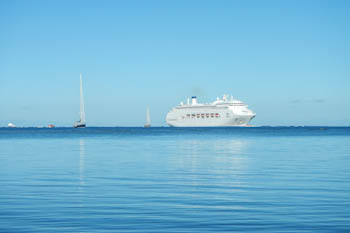
Long rows of stalls planted in the sand and topped with palm fronds offer trinkets, jewelry made from shells, leis, baskets and coconuts. They form a shopping square around an open area where local women braid visitors' hair in rows and children sing with unbridled enthusiasm whenever someone drops a donation into their collection box.
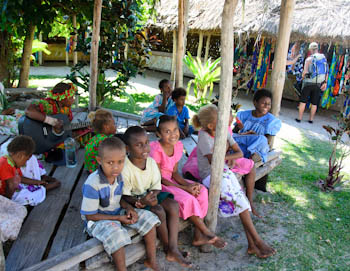

Excursions are available to go snorkeling, fishing and out on a sailing canoe, but many passengers appear horribly out of shape as they struggle to walk across the sand. They seem happy to sit in the shade sipping a cocktail from the ship's portable bar.
It amazed us, though, that not a single person, out of nearly 2,000, signed up for the Cultural Tour put on by the Anelcauhat Primary School.
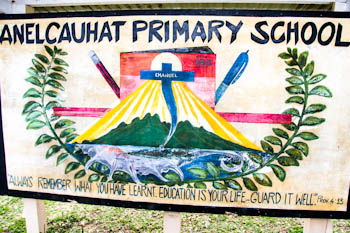
Jim had quickly gained a reputation on the island as a man armed with a camera and ready to shoot, producing high quality photos a short time later. Jonathan, the headmaster, asked him to take some pictures of this new enlightening exhibition the school was offering.
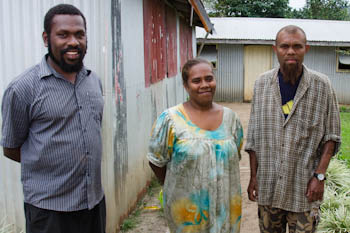
We met Jonathan (left) and teachers Natu and Ben at the school the next time a cruise ship was in. Jonathan said no passengers had signed up, but since the children had practiced so hard and were excited to present their demonstrations, would we be willing to take the tour and shoot some photos? Of course we would.
What a fantastic presentation!
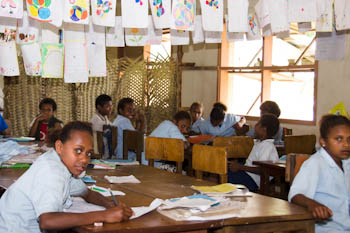
It began with a tour of classrooms to meet the children, view their work, and check out the buildings which were in need of some repair. Jonathan explained that this is the main reason the school must raise money. Mother Nature can be brutal in Vanuatu, often leaving structures in shambles when her fury subsides. This school was built with funds from the EU in 2007, but primary schools are underfunded and cannot always cover the cost of maintenance and repairs.

Natu continued the tour outside on a grassy patch where children and adults were dressed in ancestral outfits made from banana and pandanus leaves. Boys' consist of 3 parts and they wear feathers on their heads for special ceremonies. Girls wear just a grass skirt and ladies add a top of the same material.
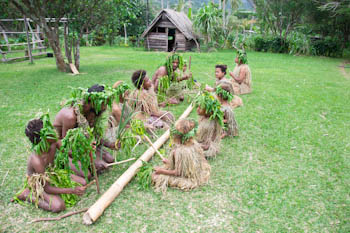
Two types of ritual dances are performed, one sitting and one standing. Elders sing songs telling stories of their culture and their past. This oral history is passed from generation to generation. The sitting dance is accompanied by rhythmic drumming on a long bamboo pole while the standing dance includes singing, circling, jumping and stomping.
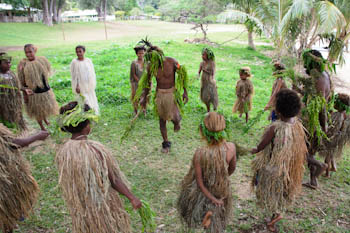
Girls gathered in a shady spot under a tree to weave baskets, mats, headbands, bows and toys such as balls, grasshoppers and pinwheels. They do not learn these skills in school, rather they join their mothers and other women in groups weaving necessary items while enjoying the social camaraderie.
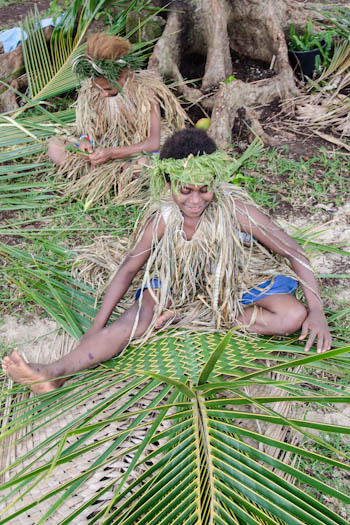

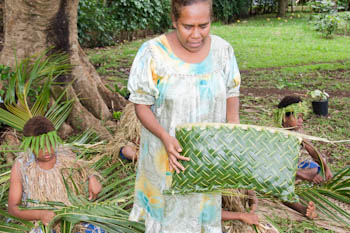
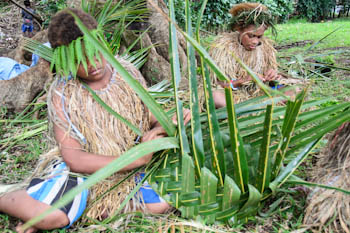


Behind the classrooms are gardens where the children learn how to raise crops such as taro, yams, kumula, cabbage, lettuce, onions, carrots, snake beans, eggplant, tomatoes, cucumbers, peppers as well as coconut, banana, papaya, mango, avocado, lemon, lime and chocko trees. They also learn to cultivate kava.
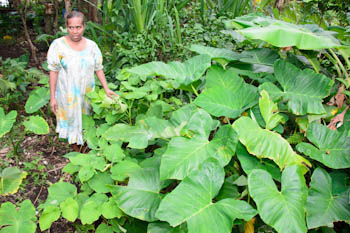
Beyond the school grounds is a low, swampy area which used to be underwater and still floods during summer rains. It was a haven for mosquitos but now hard workers keep a narrow channel dug to the sea which allows water to run out. Malaria occurs in parts of Vanuatu, but has been eradicated on Aneityum. People arriving from other islands are tested at the airport on Mystery Island before allowed to come ashore on the main island.
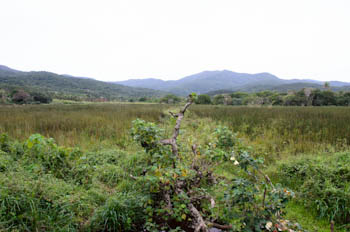

Coconut trees are vital in Vanuatu. The wood is used for houses, the leaves for roofs, mats, and baskets, the husks for burning, the meat for eating, and the water for drinking. Coconut milk is an important ingredient in many dishes including traditional laplap. This glutinous meal is made from grated taro, manioc, green or ripe bananas, often with a layer of meat or chicken in the middle, which is mixed with coconut milk, wrapped in banana leaves, and cooked beneath hot stones and a layer of earth for at least 90 minutes. It's an acquired taste for most yachties, but I'm fond of it.
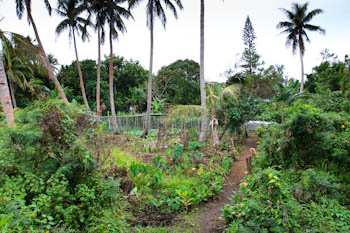
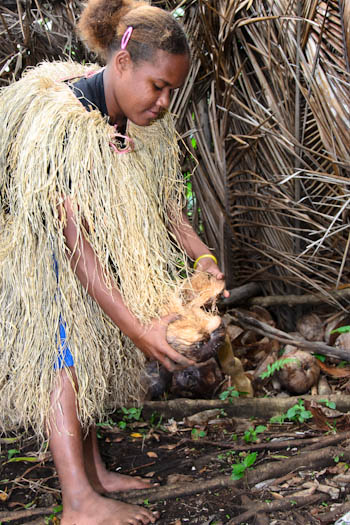
We were shown how to open coconuts and grate the meat, mix it with coconut water and strain it to make coconut milk.
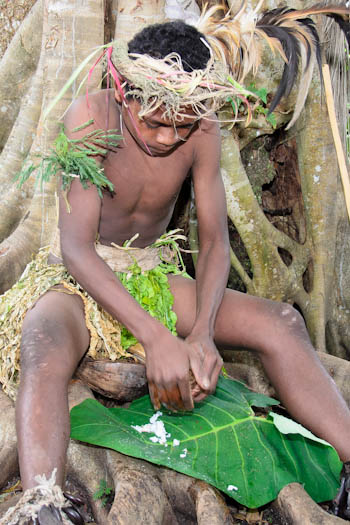
Pigs. Pigs are big in Vanuatu. Pigs are money. Pigs are prestige. Pigs are food. Every family has pigs. There are pens at the school where the children learn to raise and care for these likable creatures. Each Wednesday the pampered piglets are given coconut meat while other days they are given scraps. The children learn the value of pigs early in life.
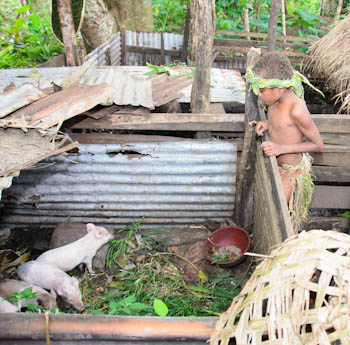
If families are unable to pay the tuition for secondary school, their children will leave primary school with the skills to survive and contribute to the overall well-being of the community. They will be able to feed themselves and live in harmony with each other.
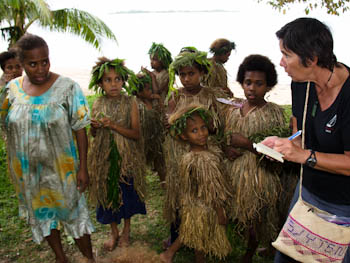
After the presentation we were offered fresh fruit and coconut water. What a fabulous, informative and enriching experience this cultural tour was! Perhaps it delved deeper into the local culture than many cruise ship passengers cared for, but we are certain that most yachties would be thrilled to have this opportunity to learn, ask questions and take photos.
So yachties, consider yourselves invited. Organize a group, seek out Jonathan or Natu at the school to arrange a date and time, and have a great afternoon!
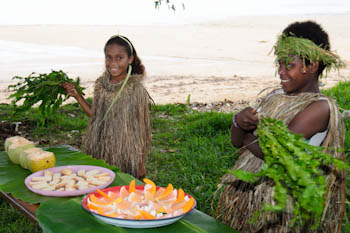
In thanks for their extraordinary effort, we put together a photo album of the children and their demonstrations. We also made an A4 sized advertisement that we hope may attract some curious folks from Mystery Island.
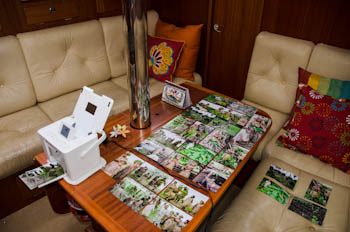
Go to August 2012 Part Three - Port Resolution